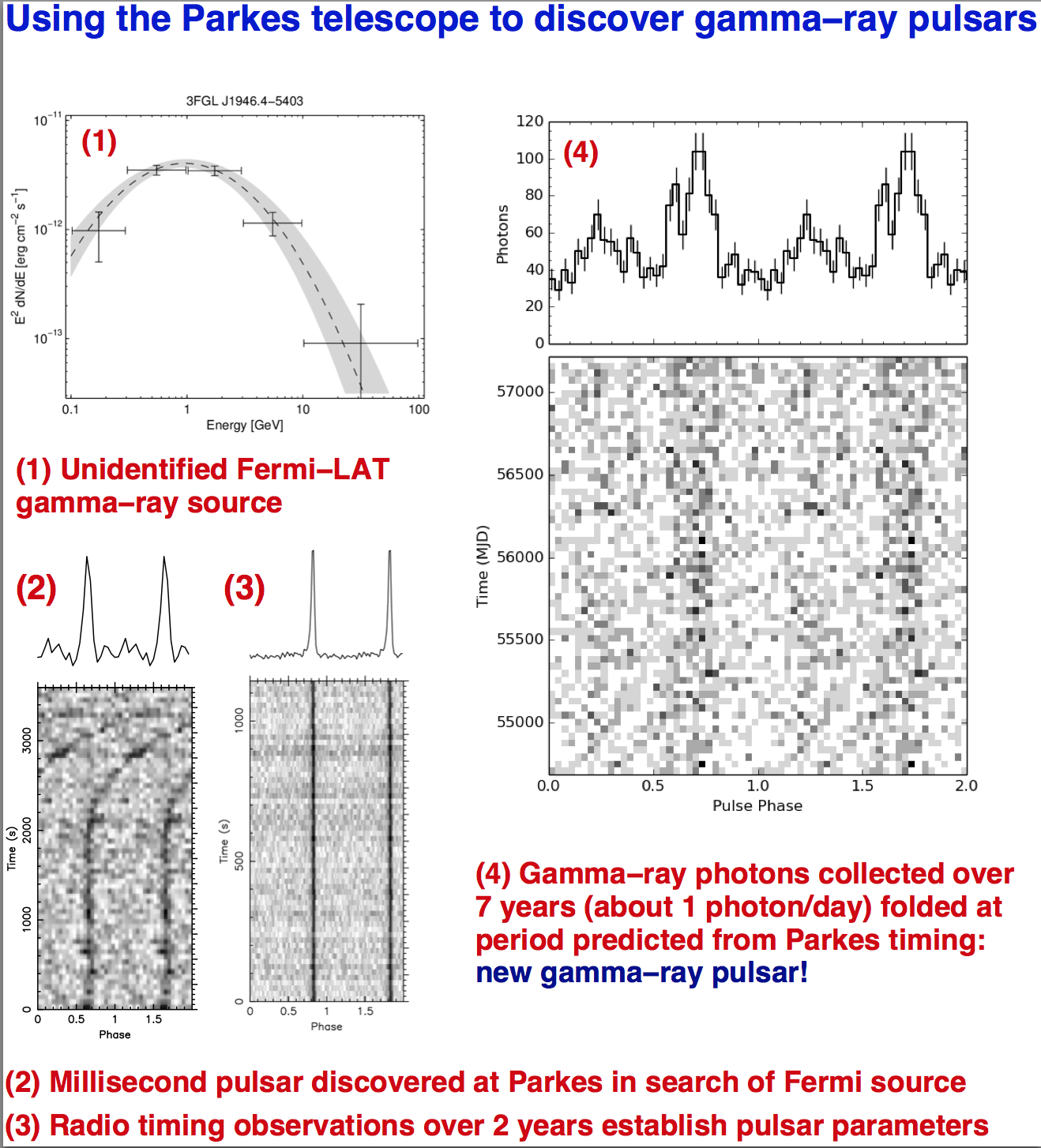| 18th of July 2015 |
|---|

|
| Parkes radio searches of Fermi gamma-ray sources and millisecond pulsar discoveries |
| by Fernando Camilo (Columbia University) |
| The Fermi Gamma-ray Space Telescope has
revolutionized the study of the high-energy universe since its launch in 2008.
Many of its discoveries are achieved in conjunction with other telescopes, such
as the CSIRO 64-m Parkes radio telescope in NSW. The third Fermi-LAT point
source catalog (Acero et al. 2015) contains more than 3000 gamma-ray objects.
Active galactic nuclei dominate the extragalactic sample and rotation-powered
pulsars are the largest identified Galactic category. About 1000 of these GeV
sources remain unidentified. From this group we select those with plausible
pulsar characteristics (for example, not variable in gamma-rays). We then use
the Parkes telescope to search for radio pulsars that might power the gamma-ray
sources. Once we discover a pulsar we must determine its detailed parameters before we can "fold" the sparse gamma-ray photons collected over several years at the predicted pulsar period. The detection of gamma-ray pulsations using the radio period proves that the pulsar is the source of the gamma rays. The above image shows the latest such discovery. PSR J1946-5403, located about 3000 light years from Earth, spins every 2.7 milliseconds in a 3-hour orbit with a so-called "black widow" companion having 3% the mass of our Sun. We discovered the pulsar at Parkes in 2013, and determined its timing solution this week, resulting in the immediate discovery of gamma-ray pulsations. More details and discoveries of this survey, carried out by a group of ATNF astronomers and their collaborators, are available in an article just accepted for publication (Camilo et al. 2015, ApJ, arXiv:1507.04451). |